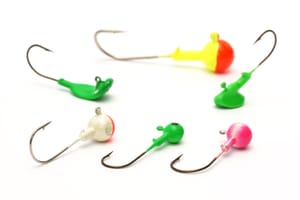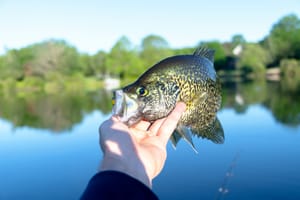Walleye fishing is an art that combines skill, patience, and the right equipment. One of the most critical components of your tackle when targeting this popular game fish is the hook. Selecting the best hook size for walleye fishing can mean the difference between a successful catch and a missed opportunity. In this editorial, we'll dive into the nuances of choosing the perfect hook size for your next walleye adventure.
Key Takeaways:
- Understanding the importance of hook size in walleye fishing.
- Factors to consider when selecting the best hook size for walleye.
- Practical tips for maximizing your success rate with the right hook.
The Significance of Hook Size in Walleye Fishing
When it comes to walleye fishing, the hook is your direct connection to the fish. A hook that's too large may intimidate or impede the walleye, while one that's too small could fail to secure the catch. The ideal hook size for walleye fishing balances visibility, bait presentation, and the strength needed to hold the fish.
Walleye are known for their cautious biting behavior, making the hook size even more crucial. A hook that's appropriately sized for the bait used can trick a walleye into biting more confidently, increasing your chances of a solid hookset.
Factors Influencing Hook Size Selection
Several factors come into play when choosing the best hook size for walleye fishing. The type of bait, the fishing technique, and the size of the walleye you're targeting all influence your decision. For instance, live bait such as minnows or nightcrawlers typically requires a different hook size compared to artificial lures.
Additionally, the fishing method—whether you're jigging, trolling, or casting—can dictate the hook size. Jigging, for example, often requires a compact and precise hook to ensure the jig's action is not compromised, while trolling might allow for a slightly larger hook to accommodate the movement and speed.
The Role of Bait in Hook Size Determination
The bait you choose to entice walleye plays a pivotal role in selecting the right hook size. Live bait, a favorite among walleye anglers, requires a hook that's large enough to hold the bait securely but not so large that it hinders its natural movement. For minnows, a size 4 to 8 hook is commonly used, while larger baits like leeches or nightcrawlers may require a size 2 to 6 hook.
Artificial baits, on the other hand, often come with pre-attached hooks, but these can be swapped out to better match the walleye's expectations. When using soft plastics or crankbaits, ensure the hook is proportional to the lure size to maintain its intended action and appeal.
Seasonal Considerations for Hook Size
Walleye behavior changes with the seasons, and so should your hook size. During the spring spawn, walleye may be more aggressive, allowing for a slightly larger hook. In the summer and fall, when walleye can become more finicky, opting for a smaller, less conspicuous hook might yield better results.
Water clarity is another seasonal factor that can affect hook size choice. In murky waters, a larger hook may not deter walleye as much, while in clear waters, a smaller, less visible hook is often preferable.
Tackling Different Water Bodies
The body of water you're fishing in can also influence the best hook size for walleye fishing. In large lakes and reservoirs where walleye grow bigger, anglers might lean towards larger hooks to match the size of the baitfish and the walleye themselves. Conversely, in smaller lakes or rivers, a more delicate approach with smaller hooks may be necessary.
It's essential to research the specific water body you plan to fish in and adjust your hook size accordingly. Local bait shops and fellow anglers can be valuable resources for this information.
Expert Angler Insights and Case Studies
Experienced walleye anglers often have a wealth of knowledge when it comes to hook size selection. Case studies and personal accounts highlight the importance of adapting hook size based on real-world conditions. For example, an angler fishing a well-known walleye lake might find that a size 6 hook is the sweet spot for consistent catches.
In another scenario, an angler competing in a walleye tournament might switch to a size 8 hook to secure smaller, yet more abundant, walleye to meet their quota. These insights can guide both novice and seasoned fishermen in making informed decisions about hook size.
Summary
Choosing the best hook size for walleye fishing is a nuanced decision that can significantly impact your success. By considering factors such as bait type, fishing technique, seasonal behavior, and the specific water body, anglers can select the ideal hook size to increase their catch rate. Remember to stay adaptable and learn from experience, as walleye fishing often requires a keen sense of observation and adjustment.
FAQ Section
What is the most common hook size for walleye fishing?
The most common hook sizes for walleye fishing range from size 4 to 8 when using live bait, and size 2 to 6 for larger baits like leeches or nightcrawlers.
Can the same hook size be used for different walleye fishing techniques?
While certain hook sizes can be versatile, it's often best to tailor your hook size to the specific fishing technique you're using to ensure optimal bait presentation and hookset.
How does water clarity affect the choice of hook size for walleye fishing?
In clear water, smaller and less visible hooks are generally preferred to avoid spooking the walleye. In murky water, the visibility of the hook is less of a concern, and slightly larger hooks can be used.



